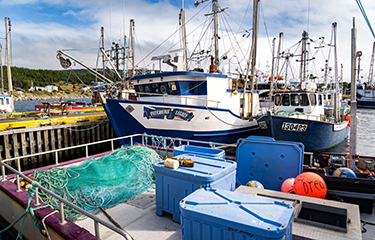Canadian government providing CAD 25 million investment to Newfoundland's seafood industry

Canada’s Department of Fisheries and Oceans (DFO) is investing over CAD 25 million (USD 18.2 million, EUR 16.6 million) in fishing and processing in the province of Newfoundland and Labrador.
The government of Canada and the province are contributing CAD 25.3 million (USD 18.4 million, EUR 16.8 million) to 147 different projects in Newfoundland and Labrador to improve harvesting, processing, aquaculture, and indigenous partnerships in the province, the DFO said in a release. The funding will be sourced from the CAD 400 million (USD 291 million, EUR 266 million) Atlantic Fisheries Fund (AFF), which the DFO said is focused on increasing opportunities and market value for fish and seafood products from Atlantic Canada.
“Investments through the Atlantic Fisheries Fund strengthen the seafood sector in Newfoundland and Labrador. We are proud to contribute to innovation and technologies to help make the sector more efficient, increase sustainability, and enable the sector to compete on a global level,” Canada Minister of Fisheries, Oceans, and the Canadian Coast Guard Diane Lebouthillier said.
The majority of the funding and projects are focused on harvesting, with 116 different projects that will help support new equipment and innovative technologies that will improve the quality of seafood and the productivity and sustainability of harvesters in the province, DFO said. The next-largest category is processing, and the DFO said the funding will target 22 different projects to advance technologies to improve the quality and competitiveness of seafood from Newfoundland and Labrador.
“Newfoundland and Labrador has a world-class fishery with incredible potential, and our harvesters and processors have the know-how and determination to grow the fishery,” Minister of Rural Economic Development Gudie Hutchings said. “The Atlantic Fisheries Fund is helping unlock that potential, to create more good jobs in the fishery and more value for our province.”
Seafood processing has been a hot-button topic in Newfoundland and Labrador in recent years as the region’s snow crab fishery faced big increases in its total allowable catch (TAC). In 2022, the DFO set a TAC of 50,470 metric tons (MT), an increase of 32 percent over 2021.
The increase led to processers in the region saying they were “compelled to respond” after the huge supply of snow crab coupled with shrinking demand caused the price to drop. The Association of Seafood Producers (ASP), a nonprofit representing seafood producers in Newfoundland and Labrador, Canada, said the market wasn’t behaving normally and limited production in response.
The Fish Food and Allied Workers Union (FFAW), which represents crab harvesters and workers in the province, at the time said the oversupply was also forcing plant workers in the region to work overtime to keep up.
Then, in 2023 the TAC went up 8 percent to 54,727 MT even as demand collapsed and prices crashed even further, leading to a standoff over what price processors would pay to harvesters.
While harvesting and processing are the main focus of the additional DFO funding, aquaculture is also getting funds. A total of five projects that will enable the adoption of new technologies for salmon and oyster aquaculture will get some of the funds.
The final four projects are tied to indigenous partnerships and are intended to enhance the sustainability and modernization of equipment used in the seafood sector.
“The Atlantic Fisheries Fund continues to make vital investments in the fishing and aquaculture sectors with these latest projects that focus on equipment modernization and improving productivity, product quality and sustainability,” Province of Newfoundland and Labrador Minister of Fisheries, Forestry and Agriculture Elvis Loveless said. “I am confident the collective efforts of government, industry, and our fishing communities will help position the seafood sector in Newfoundland and Labrador for success.”
Photo courtesy of Ramon Cliff/Shutterstock




Share